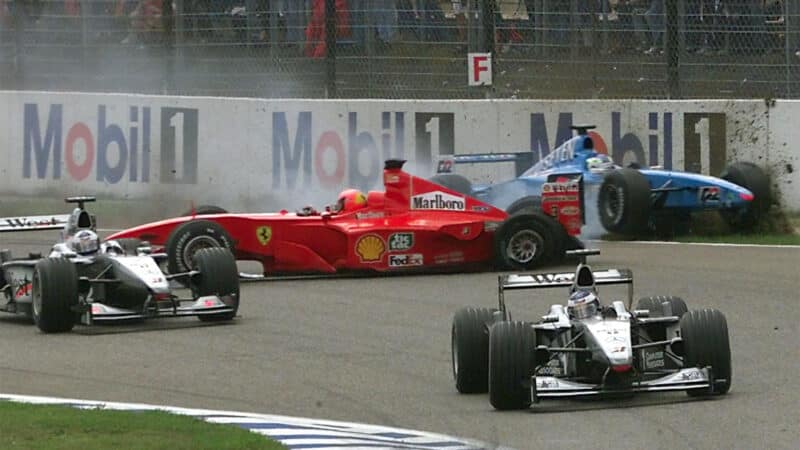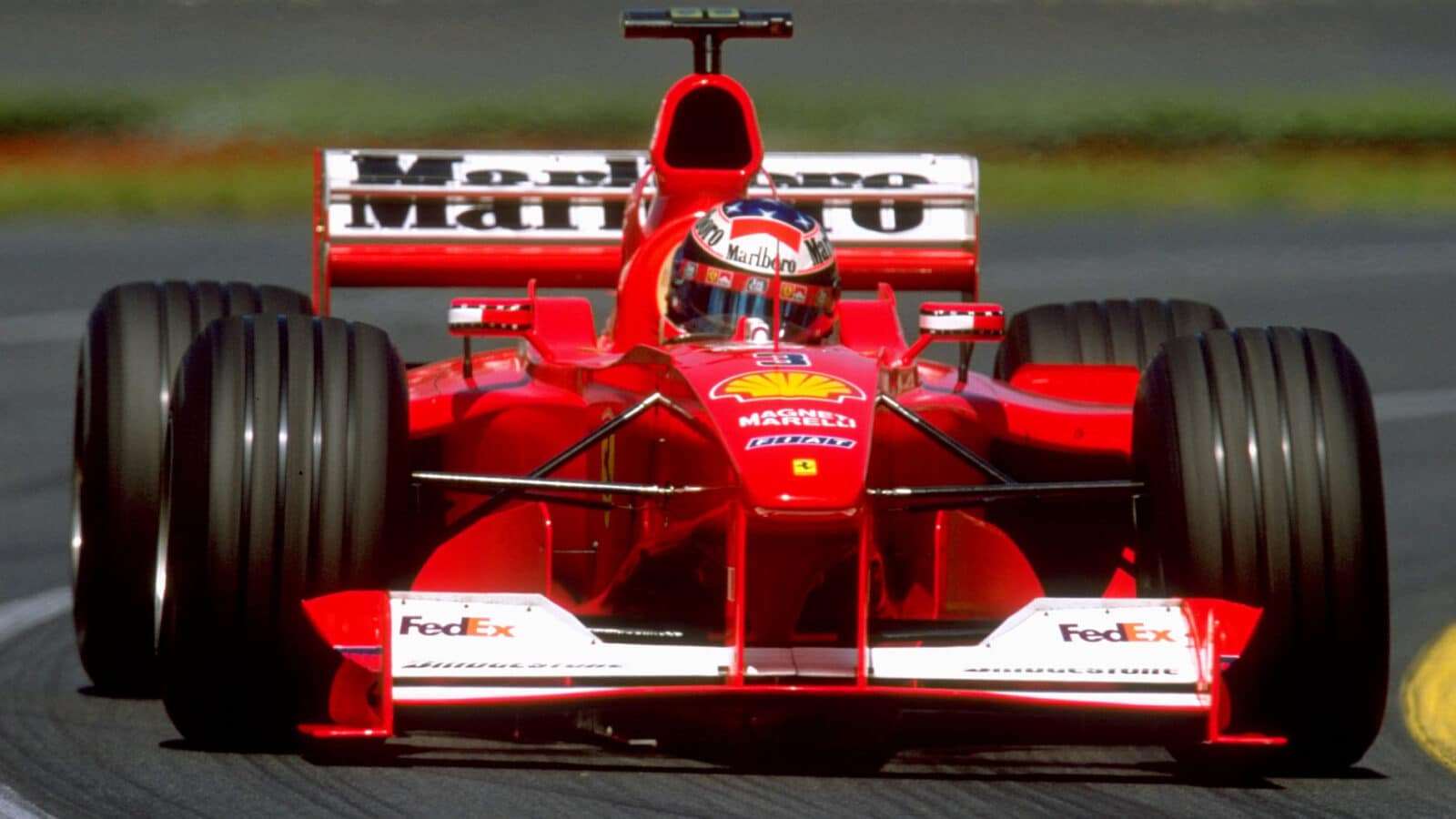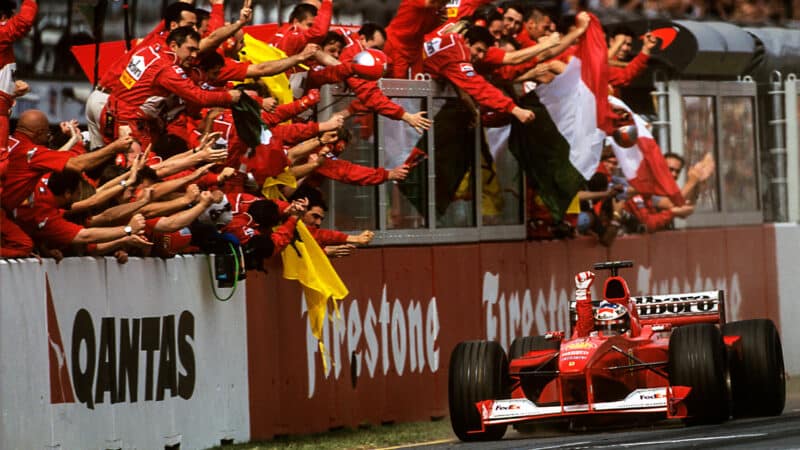Time moves on; another year, another title for Schumacher. But even if Michael was to reach an unlikely double-figures tally of world championships, F1-2000 would remain special. For this is the first red car in which he finished the job, the one that heralded an era of dominance the like of which had never been seen.
From the first race in Australia, Brawn and Schumacher knew that F1-2000 was the car to lift a mountain of pressure. Since their first season together in red, expectation had mushroomed with each near-miss: the ignominy of Jerez 1997, the anti-climax of a start line stall at Suzuka ’98, the broken leg in ’99. This was their fourth attempt. If they failed, would Luca di Montezemolo’s patience hold for a fifth?
In reality, the team had done brilliantly just to be contenders in those first three years. Brawn and Byrne had joined a team with the biggest budget — but one that was not equipped with a proper chassis department. The John Barnard years, where Ferraris were designed in Guildford rather than Maranello, had left the giant out of step with the British empires at McLaren and Williams. The new technical director and chief designer had to start from scratch.
By 2000 their work was paying off; they no longer had to rely solely on Schumacher’s genius to carry the team. For the first time since ’98 McLaren had not arrived in Melbourne with a clear car advantage. “In previous years, we got to the first race and found we were half a second off the pace and thought, ‘Oh my God, what are we going to do?” says Brawn. “For the first time, in Australia 2000, we thought, ‘Right, at least we are starting on a pretty good footing’.

A difficult run through mid-2000 handed initiative back to Häkkinen
Getty Images
Yes, it wasn’t bad. Schuey won the first three races, opening up a 24-point gap to Häkkinen, whose McLaren had already suffered two Mercedes engine failures. Surely there was no way back for the Finn, especially when he suffered a clear slump in motivation. But this title wasn’t going to be won that easily.
“Ferrari pushed the boundaries with a system that replicated traction control”
McLaren’s shot in the arm came at Magny-Cours, where an inspired David Coulthard fought — and beat — Schumacher, whose Ferrari suffered a rare engine failure. Then in Austria the ‘real’ Mika returned to lead a McLaren 1-2; Schuey was left floundering in a first-corner accident. He was taken out at the first corner in Hockenheim, too. Three races, no finishes and a title lead reduced to just two points.
The slip was caught with a pair of second places in Hungary and Belgium, but Mika won both and now headed the points. It was time for Ferrari to hit back if it was to avoid a humiliating defeat.
It was at Spa that Brawn noted the tide turning back in their favour, even though Häkkinen won. The MP4-15 was quicker on low-downforce tracks, but now it seemed there would be little in it at Monza. This was when Paolo Martinelli, Ferrari’s engine guru, made the difference. The Mercedes and Ferrari V10s were considered to be level pegging at the start of the year. That had changed by the last four races; Martinelli’s 90-degree 049 passed the 18,000rpm mark during the season, a first for a normally aspirated Ferrari engine. Schumacher took pole in all of the last four grands prix, and won each of them to claim the title. Meanwhile, heads were scratched at McLaren and Mercedes.



